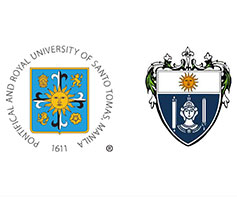ISSN 2619-7219
Volume 7, December 2019
EDITOR’S NOTE
Language use is a fundamental human capacity; it serves as our essential tool for speaking, thinking, and feeling. Language embodies almost everything we do—telling a joke, sharing a story, naming a baby, writing a news report, utilizing voice-recognition software, and the like. Thus, to understand language is to understand the human experience—taking on a world, a culture. Linguists devote their time and effort to address diverse issues, even from some little yet important things we do not seem to notice every day. For instance, in the purview of discourse analysis, the natural use of everyday language can be examined, which involves gender differences, language and politics, language and the media, among several others. Contact linguistics, on the other hand, explores what happens when cultures are exposed to different languages. In multilingualism and sociolinguistics, language-studies enthusiasts define what it means to be multilingual and describe how the language we use in a social context reflects who we are and what we know about this language and its significance in society, respectively. Therefore, language and linguistics take on an essential role in every human undertaking. It is within this perspective that AJELS has remained faithful in exploring the dynamic and shifting nature of the English language and in encouraging ongoing deliberations on World Englishes, linguistic landscapes, critical discourse studies, forensic linguistics, language documentation, and several other current issues on languages. AJELS, in its own little way, aims to improve the quality of language research, which can help meet our needs and goals for a better society.
It is my pleasure to announce the addition of highly qualified experts to the AJELS team: Dr. Francisco Perlas Dumanig of University of Hawaii at Hilo, Hawaii, USA; Dr. Paul Kei Matsuda of Arizona State University, Tempe, Arizona, USA; Dr. R. Dian Dia-an Muniroh of Universitas Pendidikan Indonesia, Bandung, Indonesia; Dr. Eva Ng Nga Shan of The University of Hong Kong, Pokfulam, Hong Kong; Dr. Isabel Picornell of Aston University/QED Limited, United Kingdom; Dr. Willy A. Renandya of National Institute of Education, Nanyang Technological University, Singapore, Singapore; Dr. Supong Tangkiengsirisin of Thammasat University, Bangkok, Thailand; Dr. Xinghua Liu of Shanghai Jiao Tong University, Shanghai, China; and Dr. Shaomin Zhang of Guangdong University of Foreign Studies, Guangzhou, China.
This volume features nine articles that deal with different fields in applied linguistics such as discourse analysis, critical discourse study, stylistics, and language education.
The first research article by Audrey B. Morallo deals with an analysis of linguistic mitigation strategies employed by language supervisors in post-lesson discourse. By using the recorded and transcribed post-conferences between in-service and preservice teachers, and language supervisors, three major groups of linguistic mitigation strategies were found, namely syntactic, semantic, and indirect mitigation techniques. The extensive use of these strategies would show the awareness of the supervisors on the need to balance clarity and maintenance of personal relationships. Likewise, these mitigation strategies in supervisory discourse demonstrated that politeness may be an important consideration for teachers to accept feedback.
The second paper “Keep the petulant testosterone off the court!”: A critical discourse study on the (re)production of sports machismo in social media” by Marie Claire Duque-Cruz investigates the discursive materialization of machismo in competitive sports (i.e., basketball) between and among men, and how it is (re)produced in social-media discourse. By using van Dijk’s (2016) sociocognitive approach to critical discourse study, it was found that the social understanding of the male ego is consciously internalized, disseminated, and embodied in social-media discourse. The article also reveals relevant findings on how the social constructions of masculinity can become problematic, specifically when men are exposed to public curiosity.
Another critical discourse study included in this volume was undertaken by Persieus S. Balog in his paper “Transitivity analysis of selected privilege speeches of Senator Miriam Defensor-Santiago.” The study was conducted to address the dearth of research examining women’s political discourse in the Philippines. By employing Halliday’s (1994) transitivity model, the study explores how Senator Defensor-Santiago used transitivity processes to manifest social problems, inequalities, and power abuse in delivering her privilege speeches.
The fourth article “Semantic deviations in Jose Garcia Villa’s ‘Poem 130’: A stylistic analysis” by Marvin Dominic B. Buena utilized Leech’s (2008) framework to determine the functions of semantic deviations identified in the said poem. It was found that these deviations manifest an excellent metaphorical sense, which is another distinct feature of the poem besides the use of eccentric commas.
In her paper “Against the old?: A critical discourse analysis of Philippine online news articles’ ageist ideologies,” Bridgette M. Lustañas examines ageism in the Philippine context by conducting an in-depth textual analysis of 30 online news articles using Fairclough’s (1995) Critical Discourse Analysis (CDA) framework, and by describing the language used in Philippine news discourse on the elderly using van Leeuwen’s (1996; 2008) role allocation and Chen’s (2015) referential strategies. The study is anchored on the assumption that the media could be an effective tool for perpetuating ideologies. Specifically, analyzing the language used in Philippine news discourse involving the elderly can become a starting point to increase awareness on ageism.
The sixth paper by Ryan Glenn C. Conda followed Aull and Lancaster’s (2014) framework to examine the stance-taking linguistic markers in literary-analysis papers used by undergraduate students from one Philippine state university. Nine recorded interviews and 58 literary-analysis papers written by these students served as research data. It was found that the students frequently utilized boosters to show commitment to their claims, which thus established their authorial presence in the essays. Further, the students employed code glosses, boosters, and adversative connectors to evidentialize their claims and make reference to authors, so they could reveal their position on the topic(s) they explain. Although the students admitted that they had a limited understanding of the functions of stance-taking, they were inclined to believe that the use of stance-taking linguistic markers would denote if an academic writer is well-read, decisive, firm, and well-informed.
Another paper on stylistics published in this volume was written by Juland Dayo Salayo and April Lontoc-Macam, who claim that using the transitivity system as a framework can guide readers to further understand the action and relation of characters to one another and to the society they live in. The study particularly explores the linguistic choices in O. Henry’s “A Retrieved Reformation,” a story that features the protagonist’s life reformation brought by love, family, and social acceptance. It is also an attempt to prove that using the transitivity system can reveal a writer’s perspective in manipulating story elements, especially character, by identifying the types of process, based on the transitivity system, used in the story; and by describing participant roles and circumstances in shaping the idea of life reformation in the story under study.
The eighth article, written by Natalie Soong Shuyi and Willy A. Renandya, identified and analyzed the cognitive levels of questions employed in Secondary Three All About English textbooks, which have been used in Singaporean schools since 2013. Findings revealed that the textbooks incorporated reading-comprehension questions which required both the lower-level and the higher-level cognitive demands, and that such rigor of questions align with the curriculum’s goals as regards the importance of training Secondary Three students, regardless of academic ability, to be engaged in questions that necessitate higher cognitive demands. It was found, however, that among the cognitive levels, there was an overemphasis on Understand and Evaluate, neglecting Remember and Apply questions. Given these results, the study recommends that coursebook writers should incorporate questions of diverse cognitive levels, so students can accomplish tasks at various cognitive demands at the school currently, and the workplace in the future.
The last paper “‘Eh?,’ ‘Huh?,’ ‘Hmm’: Pronunciation intelligibility of Vietnamese-accented English to Taiwanese EFL learners” by Tran Thi Mai Thi and Aiden C. Yeh aimed to investigate and compare the intelligibility of Vietnamese-accented English to Taiwanese EFL learners and to the speech-to-text recognition (STR) application; examine any difference in the pronunciation intelligibility scores between speakers with extensive amount of English use and exposure to English-speaking environment; and explore the factors that influence the intelligibility of the Vietnamese-accented English from the perspective of Taiwanese EFL learners. Specific pedagogical implications arise from the study: (1) EFL education in Vietnam still needs to improve the quality of English-pronunciation teaching and encourage more English-based communicative practice in order to overcome typical pronunciation difficulties; (2) the correlation between frequency of English use and exposure to a native English-speaking environment, and the intelligibility of a particular variety of English should be carefully examined; and (3) because linguistic context and familiarity with conversation topics strongly affect the intelligibility and comprehensibility of an interlocutor’s speech, teaching a wide variety of cultures and topics should be emphasized in EFL education.
I am immensely grateful to the following scholars who served as peer reviewers for this volume: Dr. Lee Kooi Cheng of National University of Singapore, Singapore; Dr. Paolo Niño M. Valdez and Dr. Shirley N. Dita of De La Salle University, Manila, the Philippines; Dr. Catherine M.B. Young of Summer Institute of Linguistics-International; Dr. Roger Barnard of University of Waikato, Hamilton, New Zealand; Dr. Ariane Macalinga Borlongan of Tokyo University of Foreign Studies, Tokyo, Japan; Dr. Carolyn D. Castro of Montgomery College, Maryland, USA; Dr. Christopher Conlan (formerly) of Curtin University, Perth, Australia; Dr. Richard Powell of Nihon University, Tokyo, Japan; Dr. Aiden C. Yeh of Wenzao Ursuline University of Languages, Kaohsiung, Taiwan; Dr. Francisco Perlas Dumanig of University of Hawaii at Hilo, Hawaii, USA; Dr. Xinghua Liu of Shanghai Jiao Tong University, Shanghai, China; Dr. Michael Tanangkingsing of National Taipei University of Technology, Taipei, Taiwan; Dr. Supong Tangkiengsirisin of Thammasat University, Bangkok, Thailand; Dr. R. Dian Dia-an Muniroh of Universitas Pendidikan Indonesia, Bandung, Indonesia; Dr. Shaomin Zhang of Guangdong University of Foreign Studies, Guangzhou, China; Dr. Remedios Z. Miciano (formerly) of De La Salle University, Manila, the Philippines; and Dr. Paul Kei Matsuda of Arizona State University, Tempe, Arizona, USA.
VERONICO N. TARRAYO, Ph.D.
Editor-in-Chief, Asian Journal of English Language Studies

Linguistic mitigation employed by language supervisors in post-lesson discourse
Audrey B. Morallo
Philippine Science High School-Main Campus, Quezon City

“Keep the petulant testosterone off the court!”: A critical discourse study on the (re)production of sports machismo in social media
Marie Claire Duque-Cruz
Polytechnic University of the Philippines, Manila
De La Salle University, Manila, the Philippines

Transitivity analysis of selected privilege speeches of Senator Miriam Defensor-Santiago
Persieus S. Balog
Far Eastern University, Manila, the Philippines

Semantic deviations in Jose Garcia Villa’s “Poem 130”: A stylistic analysis
Marvin Dominic B. Buena
University of the East-Caloocan Campus, the Philippines

Against the old?: A critical discourse analysis of Philippine online news articles’ ageist ideologies
Bridgette M. Lustañas
University of the Philippines-Diliman

Stance-taking linguistic markers in literary-analysis papers used by undergraduate students of a Philippine state university
Ryan Glenn C. Conda
Tokyo Metropolitan Ogasawara High School, Japan
Ateneo de Manila University, the Philippines

Exploring character delineation: A transitivity analysis of O. Henry’s “A Retrieved Reformation”
Juland Dayo Salayo & April Lontoc-Macam
University of Santo Tomas Senior High School, Manila, the Philippines
Trece Martires City Senior High School, Cavite, the Philippines

An analysis of the cognitive rigour of questions used in secondary school English language textbooks in Singapore
Natalie Soong Shuyi & Willy A. Renandya
National Institute of Education, Nanyang Technological University, Singapore

‘Eh?,’ ‘Huh?,’ ‘Hmm’: Pronunciation intelligibility of Vietnamese-accented English to Taiwanese EFL learners
Tran Thi Mai Thi & Aiden C. Yeh
Wenzao Ursuline University of Languages, Taiwan

